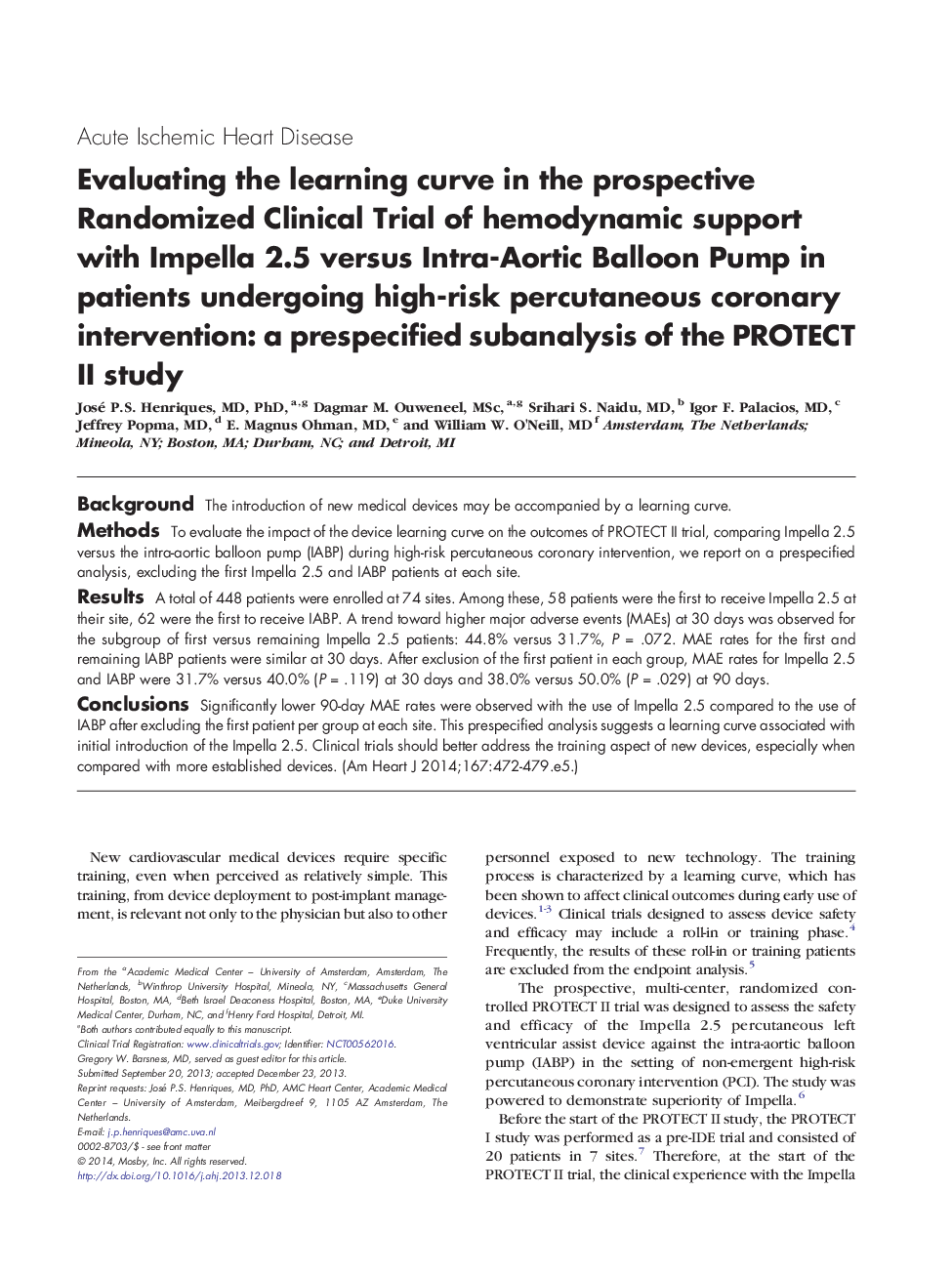| Article ID | Journal | Published Year | Pages | File Type |
|---|---|---|---|---|
| 5928557 | American Heart Journal | 2014 | 13 Pages |
BackgroundThe introduction of new medical devices may be accompanied by a learning curve.MethodsTo evaluate the impact of the device learning curve on the outcomes of PROTECT II trial, comparing Impella 2.5 versus the intra-aortic balloon pump (IABP) during high-risk percutaneous coronary intervention, we report on a prespecified analysis, excluding the first Impella 2.5 and IABP patients at each site.ResultsA total of 448 patients were enrolled at 74 sites. Among these, 58 patients were the first to receive Impella 2.5 at their site, 62 were the first to receive IABP. A trend toward higher major adverse events (MAEs) at 30 days was observed for the subgroup of first versus remaining Impella 2.5 patients: 44.8% versus 31.7%, P = .072. MAE rates for the first and remaining IABP patients were similar at 30 days. After exclusion of the first patient in each group, MAE rates for Impella 2.5 and IABP were 31.7% versus 40.0% (P = .119) at 30 days and 38.0% versus 50.0% (P = .029) at 90 days.ConclusionsSignificantly lower 90-day MAE rates were observed with the use of Impella 2.5 compared to the use of IABP after excluding the first patient per group at each site. This prespecified analysis suggests a learning curve associated with initial introduction of the Impella 2.5. Clinical trials should better address the training aspect of new devices, especially when compared with more established devices.
